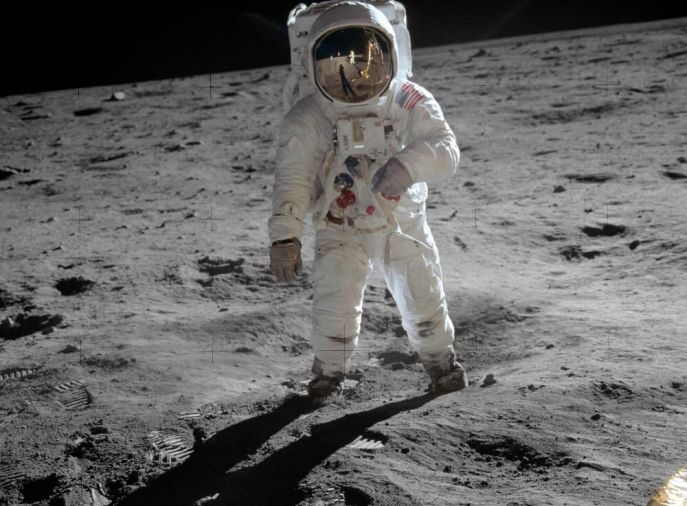“The urge to explore has propelled evolution since the first water
creatures reconnoitred the land. Like all living systems, cultures
cannot remain static; they evolve or decline. They explore or expire...
Beyond all rationales, space flight is a spiritual quest in the broadest
sense, one promising a revitalisation of humanity and a rebirth of hope
no less profound than the great opening out of mind and spirit at the
dawn of
our modern age.”
— Buzz Aldrin, the second man to walk on the moon.



With every aspect of the programmes tested, it was now time for NASA to embark on its most ambitious mission yet: an actual landing on the moon. Apollo 11 launched from Cape Canaveral on July 16, 1969, carrying Commander Neil Armstrong, Command Module Pilot Michael Collins and Lunar Module Pilot Edwin “Buzz” Aldrin into an initial Earth-orbit of 186 kilometres.
The Command and Service Module of the spacecraft was codenamed Columbia, while the Lunar Module was called ‘Eagle’. Two hours, 44 minutes and oneand-
The Command and Service Module of the spacecraft was codenamed Columbia, while the Lunar Module was called ‘Eagle’. Two hours, 44 minutes and oneand-
| Astronauts (left to right) Neil Armstrong, Michael Collins and Edwin “Buzz” Aldrin pose before the launch |
a-half revolutions after launch, they reignited for a second burn to place the spacecraft into a translunar
orbit. The first colour TV transmission to Earth from Apollo 11 occurred during the translunar coast of the CSM/LM. Later, on July 17, a three-second burn of the SPS was made to perform the second of four scheduled midcourse corrections programmed for the flight. The launch had been so successful that the other three were not needed. On July 18, Armstrong and Aldrin put on their spacesuits and climbed through the docking tunnel from Columbia to Eagle to check out the LM, and to make the second TV transmission. On July 19, after Apollo 11 had flown behind the moon out of contact with
Earth, they performed lunar orbit insertion manoeuvres that put them in a closer elliptical orbit of the moon at 111 kilometres to 300 kilometres from the surface. On July 20, Armstrong and Aldrin entered the Lunar Module again, made a final check, and at 100 hours, 12 minutes into the flight, the Eagle undocked and separated from Columbia.
orbit. The first colour TV transmission to Earth from Apollo 11 occurred during the translunar coast of the CSM/LM. Later, on July 17, a three-second burn of the SPS was made to perform the second of four scheduled midcourse corrections programmed for the flight. The launch had been so successful that the other three were not needed. On July 18, Armstrong and Aldrin put on their spacesuits and climbed through the docking tunnel from Columbia to Eagle to check out the LM, and to make the second TV transmission. On July 19, after Apollo 11 had flown behind the moon out of contact with
Earth, they performed lunar orbit insertion manoeuvres that put them in a closer elliptical orbit of the moon at 111 kilometres to 300 kilometres from the surface. On July 20, Armstrong and Aldrin entered the Lunar Module again, made a final check, and at 100 hours, 12 minutes into the flight, the Eagle undocked and separated from Columbia.